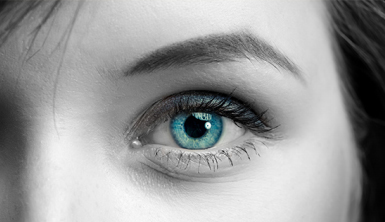Artificial retinas help bring life back into focus
Background
Project: SeeBetter
You might think that part-human, part-machine cyborgs belong only in fiction, but adding a bit of technology into your body could help prop it up as it ages, as researchers are demonstrating with the development of artificial retinas to improve deteriorating vision.

At the Tel Aviv University in Israel, a research team is developing a retinal implant that restores sight in patients that suffer from degenerative diseases of the retina. The retina is a film of tissue that lines the back of the eye, and it is made up of 10 layers, including photoreceptors, which convert light into electrical signals. This stimulates the neural layers, which send signals from the retina to the part of the brain that deals with sight in order to create a visual sensation.
‘In these diseases, light-sensitive neurons – the photoreceptors – undergo progressive degeneration, while the rest of retinal neuronal layers remain largely intact,’ said Dr. David Rand, a research associate at Tel Aviv University. Dr. Rand is part of a team working on the FUNMANIA project, led by Professor Yael Hanein and funded by the EU’s European Research Council (ERC), to create a new type of retinal implant. Retinal implants are devices that can be inserted into the eye to replace the damaged photoreceptors.
The big difference between retinal implants in the market today and those FUNMANIA are working on lies in the materials. Microelectronics Currently available retinal implants are based on modern microelectronics. They receive an input from either an external camera or a so-called photodiode, a device that converts light into an electrical current. The signal processing is done by a microprocessor, a technology based on semiconductors fabricated on a silicon chip. ‘The materials (currently) in use are rigid and designed to operate in a dry environment, which makes them unsuitable for the biological surrounding,’ said Dr. Rand. Page 4 of 19 in contrast, FUNMANIA’s implants, which are just a few millimeters in size, are made out of nanomaterials and can operate in a wet environment.
The idea is to use flexible carbon nanotubes that conduct electricity to mimic the retinal photoreceptors and create higher resolutions than ever before. ‘Our device is based on soft, flexible, organic material that serves as a platform for an array of microscale light-sensitive and wire-free microelectrodes,’ he said. So far, the team have managed to use carbon nanotubes and semiconducting nanocrystals, known as quantum dots, to make light-sensitive electrodes, and have made a biocompatible carrier for the electrodes to embed them in.
They hope to develop this technology over the next two years. ‘In parallel, we have developed the surgical procedure and implanted several implants in rabbits and rats for the purpose of biocompatibility assessment,’ said Dr. Rand. Machine vision While technology developed by FUNMANIA is being used to restore people’s vision; our ability to see is also helping to improve machines, thanks to a separate group of researchers who have been making image sensors that are inspired by the human eye.
The EU-funded SeeBetter project was set up to create faster and more precise image sensors using inspiration from biological retinas. Conventional image sensors, like those you might find on your phone or camera, are limited compared to our own eyes in their ability to process images in both space and time. The SeeBetter researchers modeled retinal vision mathematically and computationally in order to better understand the role of cells in the retina.
The ultimate goal was to build a silicon retina with pixels that can process images of the cells in the eye. The new sensors made by the researchers are much faster than conventional sensors because instead of only producing a signal proportional to the amount of light hitting the pixels, each pixel reacts to changes in light intensity. Dr. David San Segundo Bello, a researcher at IMEC, a nanoelectronics research center in Belgium, and lead researcher on SeeBetter, says that the finished product has demonstrated its worth in a variety of applications, including the sensor being used to track a remote-control racing car. Other uses could include medical diagnosis and treatment. ‘Their inherent object and shape detection could be used in biomedical applications such as cell counting and classification,’ he said.
This innovation was made possible by Israel’s continued participation in the official Horizon 2020 fund, managed in Israel by ISERD part of The Israel Innovation Authority (Formerly the Office of the Chief Scientist and MATIMOP). The initiative has taken Israeli R&D to the next level with the help of ground-breaking collaboration between scientists in Israel and Europe, as well as essential funding and support.
Project details
Project acronym: SeeBetter
Participants: Belgium (Coordinator), Switzerland, UK Project
Reference N° 270324
Total cost: € 2 764 562 EU contribution: € 2 100 000
Duration: February 2011 – April 2015
